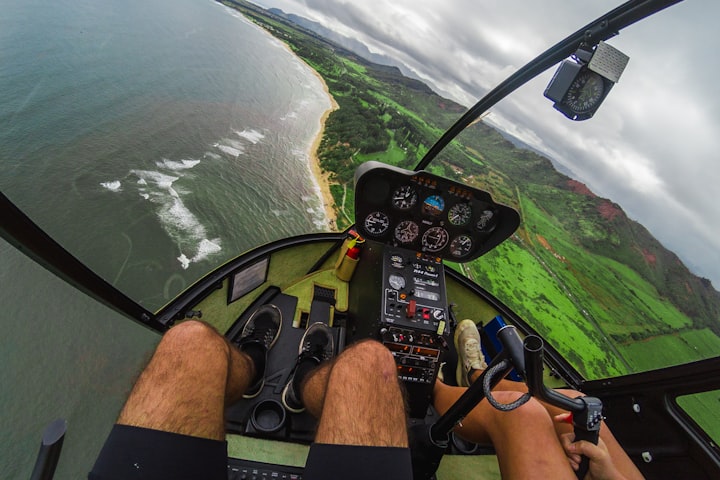Probably the Costliest and Most Stupid Bet in History
Was the bet really worth it?

Most of us love to bet. It's fun to predict something and deliver to prove the prediction. But for some, betting is a serious business, like professional casino players or fighters playing to earn a living.
Then there are other people who go too far in betting without understanding the consequences.
The Journey of Flight SU 6502 to the final destination
A classic example is the story of Aeroflot Flight 6502. On the 20th of October 1986, the Russian flight TU-134 was flying from Koltsovo Airport to Grozny Airport with a stopover in Kurumoch International Airport (present-day Samara). The domestic flight had eighty-seven passengers and seven crew members on board. The flight was fine; the weather was normal - nothing unusual.
As it got close to Kurumoch, the controller asked the pilots to fly an NDB approach to the runway. An NDB approach is challenging and lacks vertical guidance compared to an LLS approach that provides precisely where you are in relation to the correct glide path; too high or low? Are you to the left or right of the runway? All that information is right there for the taking.
In an NDB approach, you only get lateral guidance, and no single instrument will give you all the necessary information. The pilot needs to use some calculations to get this right.
The betting starts!
At 3:48 p.m., the pilots began their descent into Kurumoch. Apparently, throughout the flight, the pilots had been discussing visibility, and Captain Alexander Kliuyev kept boasting that he could land the plane in zero visibility without using the autopilot.
At 3.51 p.m., two minutes before landing, the captain decided - why argue about this when you could do it?
So the captain told the first officer, "You know what, I bet I could land this plane in zero visibility." The first officer took him up on the challenge and turned their little conversation into a full-on bet.
At an altitude of 1,300 feet, Kliuyev ordered his flight engineer to draw the blinds across the cockpit windows. The captain was going to land this plane without looking out of the window and just using his instruments.
Such stunts are possible in modern planes with the right equipment on the ground and specially trained pilots. But they nor their aircraft was in a position to land at zero visibility.
As the captain pressed on with the landing, the jet sped by at about 160 knots. At around 200 feet, the plane was at the decision height. ATC issued a proximity warning and suggested they go around.
At this point, if you do not have the runway in sight, you should go around, gain some altitude and try landing again.
But Kliuyev disagreed and continued his fateful approach. Unfortunately, none of the other pilots objected to his foolishness. As the plane lost altitude, the ground proximity warning system came on to let the pilots know that they were too low.
At this point, the captain struggled to keep the plane on the correct glide path. He pulled back power on the engines to prevent the aircraft from overshooting the runway.
However, it was too late. Within seconds, the plane was over the runway. The captain asked the flat engineer to pull the curtains back. As light flooded the cockpit, the pilot struggled to adapt to visual flying; when they finally got their bearings, they were in for the shock of their lives. Within seconds after opening the curtains, the flight touched down about 400 feet from the end of the runway. The landing was so hard that it damaged the plane's very structure. As the plane went along, the runway fuel from the rupture tanks caught fire.
Seventy people did not survive the crash. However, the captain, the first officer, and the flight engineer survived the crash. But the first officer died of congestion from inhaling smoke when trying to help the survivors.
Soviet investigators discovered at the trial that Klyuyev made the blind landing to test his ability as a pilot and win a useless bet. He was charged and sent to prison for fifteen years for his role in the crash. The prison term was later reduced to six years.
It's sad to think that one man's reckless actions led to seventy deaths. It's almost unbelievable.
Probably, this should go down in history as one of the costliest bets. Nothing is more precious than life in this world, and definitely not worth 70 lives in this case.
References
https://www.wikidata.org/wiki/Q4055762
https://avgeekery.com/soviet-aeroflot-pilot-tried-land-blind-win-bet-killed-70-people/
About the Creator
Kavi Kamat
A banker by profession and a writer by passion. My life has always been full of ups & down, a treasure which helps me to pen down my memories. Technology and self-help are my drivers and reading is my hobby.
Thanks for your time.






Comments
There are no comments for this story
Be the first to respond and start the conversation.